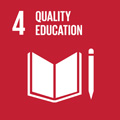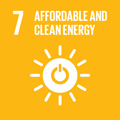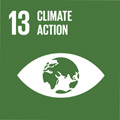- Docente: Sonia Melandri
- Credits: 9
- SSD: CHIM/02
- Language: Italian
- Moduli: Sonia Melandri (Modulo 1) Massimo Marcaccio (Modulo 2) Luca Evangelisti (Modulo 3)
- Teaching Mode: In-person learning (entirely or partially) (Modulo 1); In-person learning (entirely or partially) (Modulo 2); In-person learning (entirely or partially) (Modulo 3)
- Campus: Bologna
- Corso: Second cycle degree programme (LM) in Chemistry (cod. 9072)
-
from Oct 07, 2024 to Jan 17, 2025
-
from Oct 09, 2024 to Jan 15, 2025
-
from Dec 02, 2024 to Dec 12, 2024
Learning outcomes
At the end of the course the student knows the theoretical foundations and the operating principles of the instrumentation used in linear and non linear spectroscopy, in photoemission processes and resonance techniques. The student will also be instructed on the physical chemical principles of redox processes and their applications to signal trasduction in chemical and biological sensors.
Course contents
Module I (Prof. S. Melandri)
Electromagnetic radiation and its interaction with atoms and molecules. Absorption and emission processes. Line width and removal of line width.
General features of spectroscopic experimental methods in the various regions of the electromagnetic spectrum: radiofrequency, microwaves, infrared, UV-Vis.
Symmetry of molecules and group theory applications in spectroscopy.
Rotational spectroscopy. Classifications of rotors and their rotational spectra. Rotational Raman spectroscopy. Structure determination.
Vibrational spectroscopy. Diatomic molecules: the harmonic oscillator, anharmonicity, vibration-rotation spectroscopy. Polyatomic molecules: normal modes of vibrations, selection rules, vibration-rotation spectroscopy.
Electronic spectroscopy. Classification of electronic states in atoms, selection rules and spectra. Electronic potential energy curves and the Frank-Condon principle. Polyatomic molecules: molecular orbitals, electronic and vibronic selection rules.
Lasers and laser spectroscopy. Multi-photon spectroscopy and dynamical processes. Photoelectron spectroscopy. Raman spectroscopy.
Module II (Prof. M. Marcaccio)
Physical-chemical principles of the signal trasduction in sensors and biosensors.
Potentiometric sensors.
Electrode/solution interface, heterogeneous electron transfer, amperometric and voltammetric techniques.
Mechanisms of electrochemically induced reactions and catalysis
Electrochemical impedance spectroscopy.
Introduction to scanning probe microscopy techniques.
Modification of electrode and optical surfaces and their characterization.
Amperometric sensors and biosensors.
Optical, luminescent and electrochemiluminescent sensors.
Mass sensors: devices based on piezoelectric systems and cantilever.
Readings/Bibliography
Lecture notes and slides
Chimica Fisica, P.W. Atkins, J. De Paula, V Edizione Italiana, Zanichelli Ed., Bologna, 2012
Modern Spectroscopy, J.M. Hollas, Wiley 4th Edition.
Chimica Fisica, un approccio molecolare, D.A. McQuarrie& J.D. Simon, Zanichelli Ed. 2000.
Chemical and Biological Sensors; D. Diamond; Wiley 1998
Chemical Sensors and Biosensors; B. R. Eggins; Wiley 2002
Electrochemical Methods - Fundamentals and Applications, A. J. Bard, L. R. Faulkner, Wiley (II edition)
Teaching methods
The course consists in two units: spectroscopy and sensors.
The spectroscopy part consists of 40 hours of lessons and exercises on the fundamentals of spectroscopy and group theory applied to spectroscopy and 12 hours of laboratory practice.
The second unit consists of 16 hours of lessons and 12 of exercises.
In consideration of the types of activities and teaching methods adopted, the attendance of this training activity requires the performance of all the students of Modules 1 and 2 in e-learning mode and the participation in Module 3 of specific training on safety and health in places of study.
[https://www.unibo.it/it/servizi-e-opportunita/salute-e-assistenza/salute-e-sicurezza/sicurezza-e-salute-nei-luoghi-di-studio-e-tirocinio]
Information on dates and methods of attendance of Module 3 can be consulted in the specific section of the degree program website.
Assessment methods
Spectroscopy: written exam with numerical exercises and open questions. The exam can be taken in two steps in itinere or as a whole at the end of the course. A written report of the laboratory practice is also required.
Sensors:written exam
Teaching tools
Videoprojector, Spectroscopy laboratory, Computational laboratory. Teaching material will be available on the Virtuale platform.
Office hours
See the website of Sonia Melandri
See the website of Massimo Marcaccio
See the website of Luca Evangelisti
SDGs



This teaching activity contributes to the achievement of the Sustainable Development Goals of the UN 2030 Agenda.
